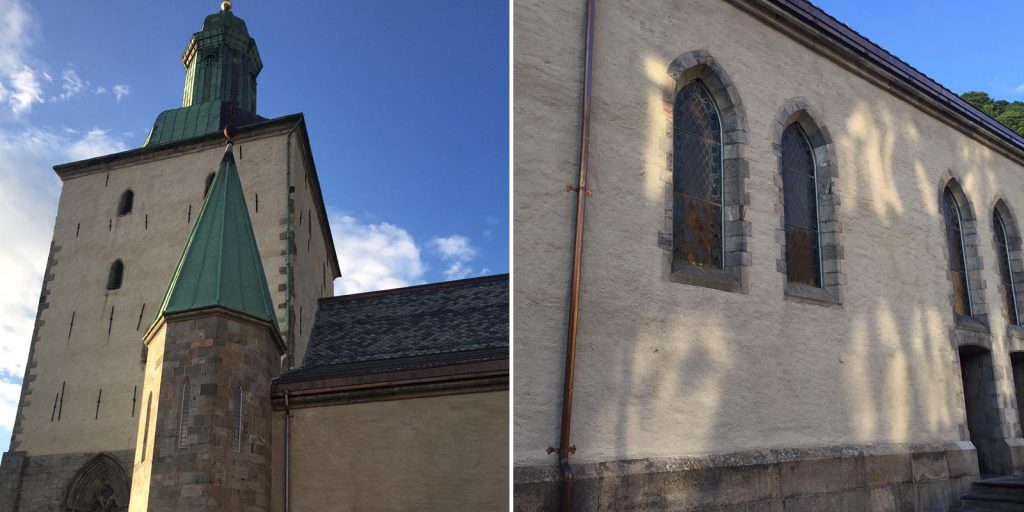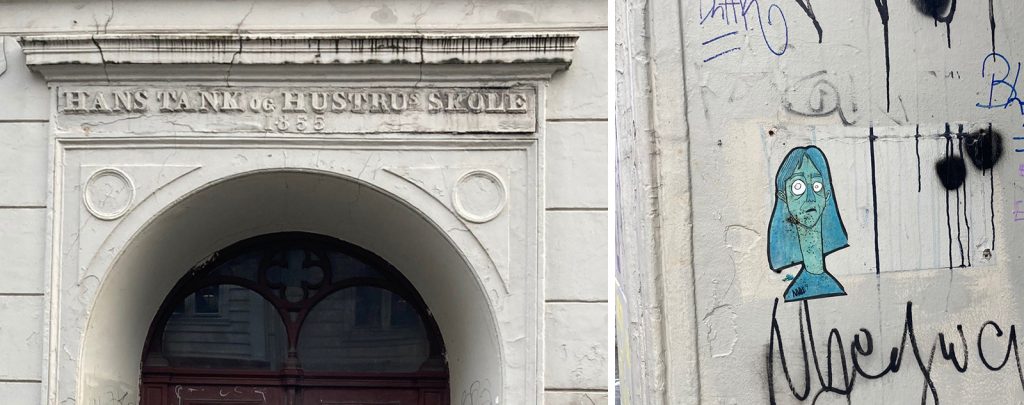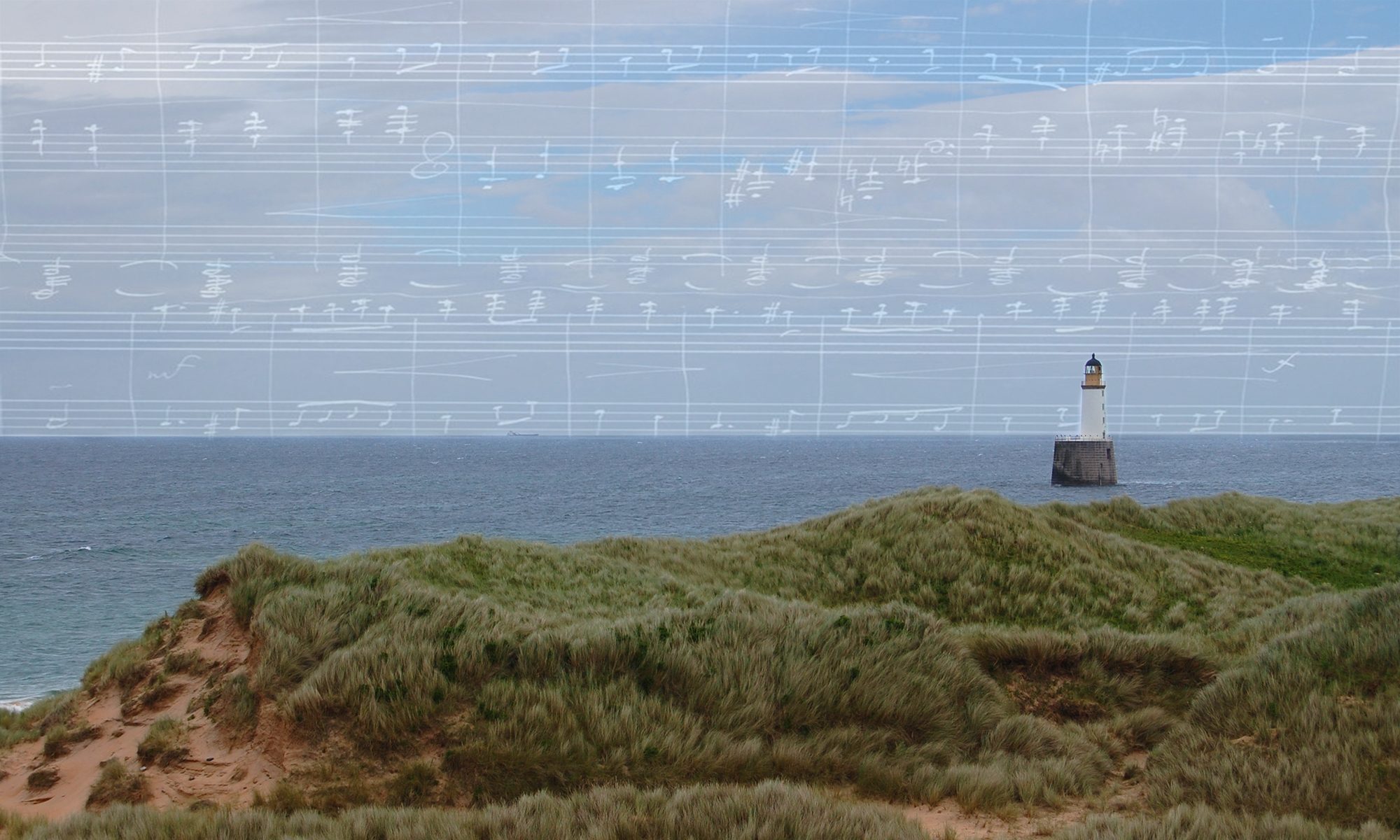Meeting up in the byways of Bergen, two of our committee members spurr memories of a famous kirk, a forgotten school and a fleeting musical reminiscence of the young Edvard Grieg’s schooldays.
Two of our committee members, both natives of Bergen, Johanne Grieg Kippenbroeck and Eva Tyson, took a trip down memory lane this autumn when they met up by Bergen’s Domkirke – the city’s old cathedral kirk and much-loved landmark dedicated to Norway’s eleventh century Saint Olaf.

Kirk, school and cannon ball
Domkirken – the kirk of the deanery – stands just a few minutes walk from Bergen’s harbour and famous Fisketorget or fish market. Set at an angle to King Oscar’s ‘gate’ (pronounced ‘gaht-ih’) and down from a street called Lille Øvregaten – a familiar-sounding placename to shoppers of Dundee’s ‘Overgate’ – the kirk overlooks a building the young Edvard Grieg once knew very well and would still recognise were he alive today.
That building, with its grand neoclassical façade, a contrast to the simple, ‘medieval’ belltower and cannon ball marked walls of its gentle neighbour Domkirken, was Grieg’s place of education – the school which shaped his boyhood years and memories.
Whether or no Grieg loved the school – named after wealthy Bergen merchant Hans Tank and his wife, and constructed in 1855 – is another question! A less than keen pupil, Grieg was wont to wander on his way to its large-windowed classrooms. Shivering beneath a gushing roan pipe in the rain, so he might arrive soaked through and be sent home, was a favourite ploy!


Norway’s patron saint in song
But that was a long time ago – indeed, more than a century and a half since the young scholar Grieg, clutching a schoolbag stuffed with his first musical creations, announced to his teachers and classmates at ‘Tanks skole’ that he was going to be ‘a Composer!’.
Naturally, no-one believed him. But, later in life, when he had indeed become a professional composer and was busy writing incidental music to Henrik Iben’s play Peer Gynt, Grieg was also editing and arranging for piano, a large collection of Norway’s Melodies [Norges Melodier EG108] in amongst which was a tiny but precious reminder of those formative years – an old ballad about Domkirken’s ‘Holy Olaf’.
Few outwith Norway will know the words to this ballad about the Nordic nation’s patron saint, its words written by poet Welhaven to an old Norwegian folktune, but all can admire the simple and affecting melody, and Grieg’s sympathetic arrangement of it for piano.
A plaque for Grieg?

Tank’s school, brand new in Grieg’s boyhood, seems a slightly tired looking veteran of the city, today, and stands empty. But, full of potential, it is expected to be put to new purpose soon. The plaque commemorating Grieg’s time at the school, and for long affixed to its graceful stone doorway, has gone, but should it return to tell the building’s story – and we hope it will – then visitors to Bergen’s stunning Domkirke and the streets around will be able, just like our city natives Johanne and Eva, to walk once more down a very special and musical memory lane.
Author: Dr Sally LK Garden (Dec 2021)
